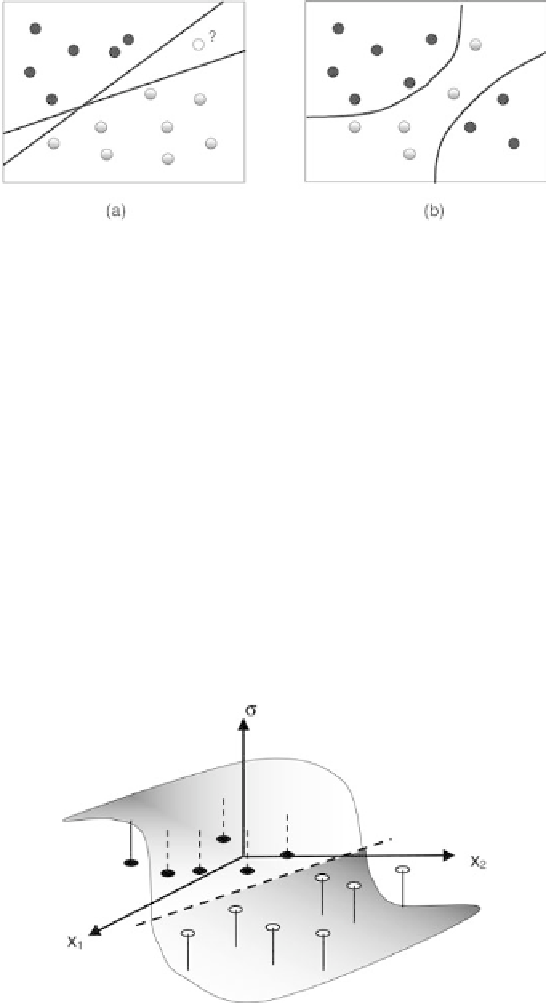Information Technology Reference
In-Depth Information
Fig. 6.1.
Examples belonging to two classes in dimension
N
= 2. The lines represent
the discriminant surfaces. (
a
) linearly separable training set, showing two separations
without training errors but giving different answers for the class of a new input
(
empty circle
). (
b
) A general case
•
if one just needs to classify the patterns
x
, the discriminant surface only is
needed. Since the classifier performs a binary function of its inputs, in this
chapter we will show how the discriminant surface may be represented us-
ing binary neurons only. That cannot be done if we transform the problem
into a regression problem;
•
if the probability that the input pattern belongs to a given class is neces-
sary, in order to make a posterior decision (such is the case for instance
when the classification is performed after comparison of the outputs of
different classifiers) we may use either continuous output units (e.g., sig-
moidal neurons), but also binary neurons. In this chapter we show that
the latter can also be assigned a probabilistic interpretation.
Fig. 6.2.
Examples in dimension 2.
Black points
stand for patterns of class +1;
white
denote those of class
−
1. The
shadowed surface
is the regression; the discriminant
surface (a line in that case) is shown as a
dotted line

Search WWH ::

Custom Search